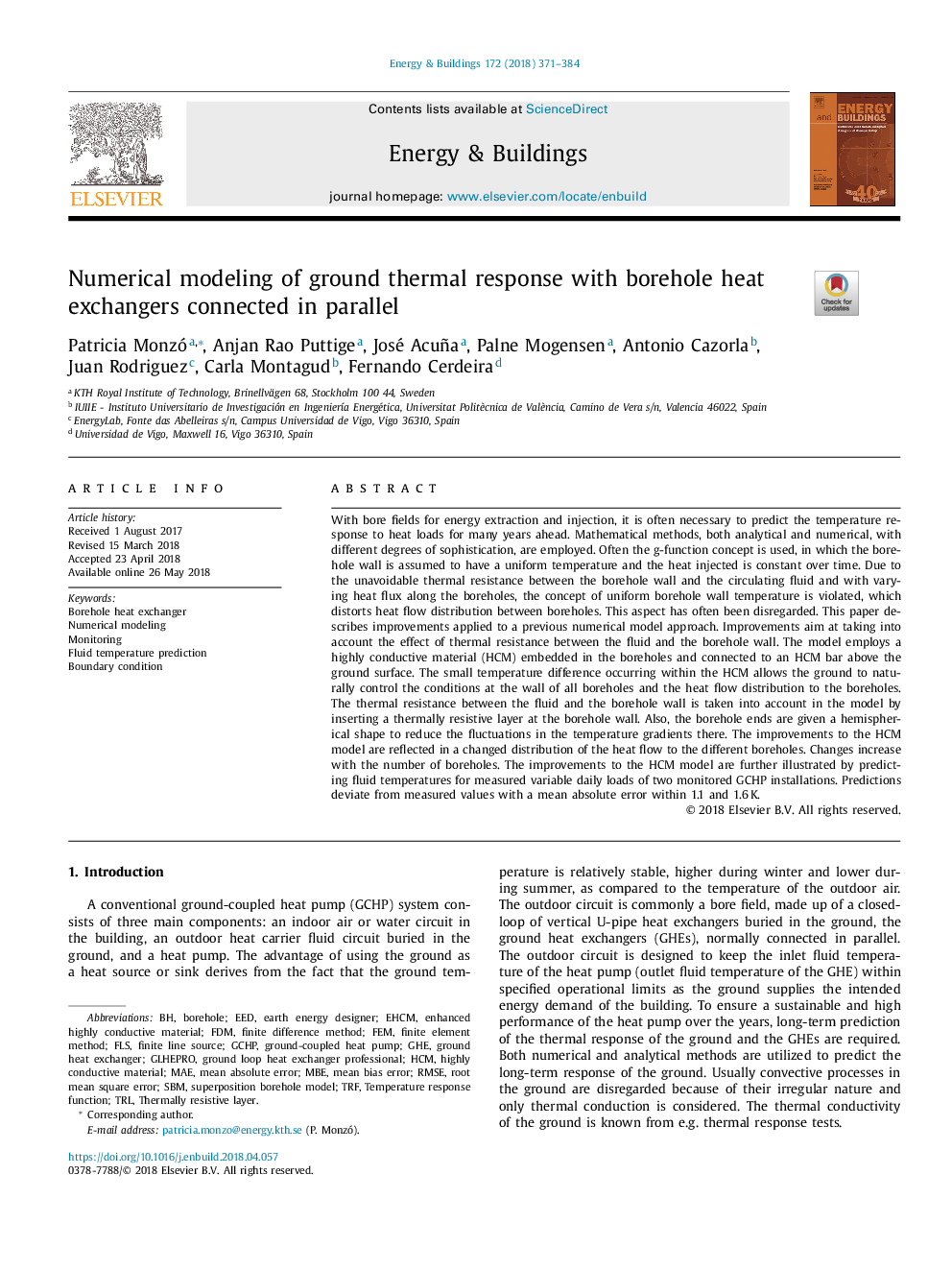| Article ID | Journal | Published Year | Pages | File Type |
|---|---|---|---|---|
| 6727633 | Energy and Buildings | 2018 | 14 Pages |
Abstract
With bore fields for energy extraction and injection, it is often necessary to predict the temperature response to heat loads for many years ahead. Mathematical methods, both analytical and numerical, with different degrees of sophistication, are employed. Often the g-function concept is used, in which the borehole wall is assumed to have a uniform temperature and the heat injected is constant over time. Due to the unavoidable thermal resistance between the borehole wall and the circulating fluid and with varying heat flux along the boreholes, the concept of uniform borehole wall temperature is violated, which distorts heat flow distribution between boreholes. This aspect has often been disregarded. This paper describes improvements applied to a previous numerical model approach. Improvements aim at taking into account the effect of thermal resistance between the fluid and the borehole wall. The model employs a highly conductive material (HCM) embedded in the boreholes and connected to an HCM bar above the ground surface. The small temperature difference occurring within the HCM allows the ground to naturally control the conditions at the wall of all boreholes and the heat flow distribution to the boreholes. The thermal resistance between the fluid and the borehole wall is taken into account in the model by inserting a thermally resistive layer at the borehole wall. Also, the borehole ends are given a hemispherical shape to reduce the fluctuations in the temperature gradients there. The improvements to the HCM model are reflected in a changed distribution of the heat flow to the different boreholes. Changes increase with the number of boreholes. The improvements to the HCM model are further illustrated by predicting fluid temperatures for measured variable daily loads of two monitored GCHP installations. Predictions deviate from measured values with a mean absolute error within 1.1 and 1.6â¯K.
Keywords
FDMMBESBMEEDTRLHCMFLSTRFRMSEGHEGCHPMAEMean bias errorFinite element methodFinite difference methodRoot mean square errorTemperature response functionGround heat exchangerBorehole heat exchangerNumerical modelingBoundary conditionFinite line sourceMean Absolute ErrorMonitoringGround-coupled heat pumpFEMBorehole
Related Topics
Physical Sciences and Engineering
Energy
Renewable Energy, Sustainability and the Environment
Authors
Patricia Monzó, Anjan Rao Puttige, José Acuña, Palne Mogensen, Antonio Cazorla, Juan Rodriguez, Carla Montagud, Fernando Cerdeira,
